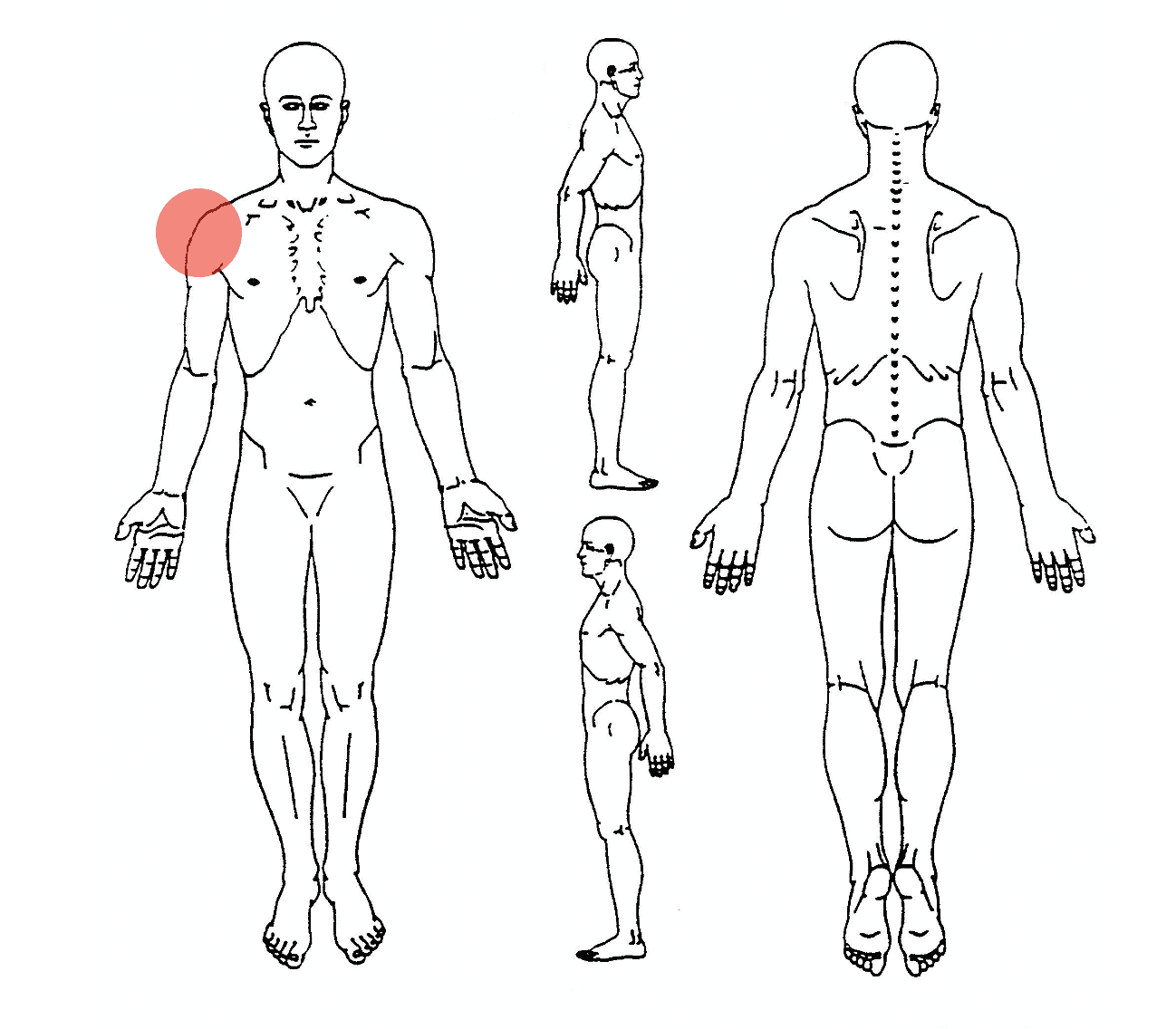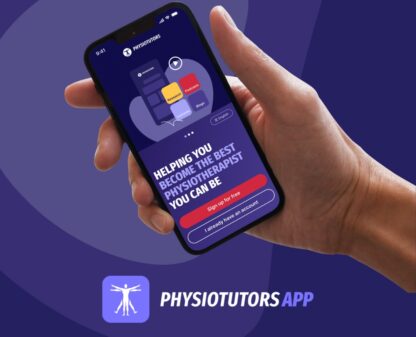Rotator Cuff Related Shoulder Pain

Body Chart

- Shoulder pain typically elicited with a painful arc between 60°-120° abduction
Background Information
Patient Profile
- From ca. 15 -50 years
- Male=female
- Overhead workers and overhead athlete
- ca. 10% of the population affected
Pathophysiology
The evidence towards an impingement of the subacromial structures is lacking, and we have more and more evidence of a more intrinsic/tendinous origin of the pain.
RCRSP describes symptoms of pain and weakness related to the rotator cuff when loaded or moved.
Peripheral nociceptive tendinopathic pain with possible inflammatory component in the acute stage. No definitive cause. Irritation due to mechanical factors
Course
Acute: can display typical inflammatory symptoms – burning, localized pain paired with night pain; signs of inflammation; small active movements are painful
Subacute: markedly direction- and movement specific; mainly abduction & internal rotation, sometimes flexion. PROM with humeral head centered mostly pain free
Aggravating
Overhead activities (reaching, sports, etc.)
Easing
All other activities, rest
24 Hour
Correlates with activities
History & Physical Examination
History
Long history without trauma. Could develop after traumatic RC-tear. Younger patients associate symptoms with overhead work/sports/activities. Symptoms present long before first consultation with a health professional
- Localized
- Deep
- Stinging
- Impinging
- Clear on-off characteristic
- Painful Arc 60°-120°
- Painful end of range
- Acute: VAS 8-10
- Subacute: VAS 6-8
- Movement and direction specific
- Mainly GH flexion, abduction, internal rotation
Physical Examination
Inspection
Scapular dyskinesis, possibly elevated/depressed shoulders. Protracted and internally rotated humerus
Functional Assessment
Patient can functionally show when symptoms occur
Active Examination
Flexion, abduction (painful arc), internal rotation painful
Passive Examination
Limited PROM in ext/int rotation, Joint play GH: hyper- or hypomobile. Centralizing humeral head during PROM might reduce pain
Special Tests
Differential Diagnosis
- Frozen shoulder
- Shoulder instability
- Traumatic subluxation
- Humeral fracture
- RC-Tears (large)
- Glenohumeral arthritis
- Ligament injuries (Tossi II-III)
- TOS
Treatment
Strategy
Conservative treatment based on the patients level of irritability
Interventions
- Decrease load on affected structures; glenohumeral joint, T-spine, and first rib mobilizations
- Rotator cuff, scapular muscle strengthening
- Sports-specific interventions (e.g. throwing)
- Stretching of shortened muscles
Example of exercises for high irritability from this course
References
- Mayer, C.a.S., W, 100 Krankheitsbilder in der Physiotherapie. 2011, Heidelberg: Springer Medizin.
- Sher, J.S., et al., Abnormal findings on magnetic resonance images of asymptomatic shoulders. J Bone Joint Surg Am, 1995. 77(1): p. 10-5.
- Jost, B., et al., MRI findings in throwing shoulders: abnormalities in professional handball players. Clin Orthop Relat Res, 2005(434): p. 130-7.
- Ellenbecker, T.S. and A. Cools, Rehabilitation of shoulder impingement syndrome and rotator cuff injuries: an evidence-based review. Br J Sports Med, 2010. 44(5): p. 319-27.
- Tennent, T.D., W.R. Beach, and J.F. Meyers, A review of the special tests associated with shoulder examination. Part I: the rotator cuff tests. Am J Sports Med, 2003. 31(1): p. 154-60.
- Kibler, W.B., et al., Clinical implications of scapular dyskinesis in shoulder injury: the 2013 consensus statement from the ‘Scapular Summit’. Br J Sports Med, 2013. 47(14): p. 877-85.
- Scaia, V., D. Baxter, and C. Cook, The pain provocation-based straight leg raise test for diagnosis of lumbar disc herniation, lumbar radiculopathy, and/or sciatica: a systematic review of clinical utility. J Back Musculoskelet Rehabil, 2012. 25(4): p.215-23.
- Michener, L.A., et al., Reliability and diagnostic accuracy of 5 physical examination tests and combination of tests for subacromial impingement. Arch Phys Med Rehabil, 2009. 90(11): p. 1898-903.
- Cook, C.a.H., E, Orhtopedic Physical Examination Tests. An evidence based approach. 2nd ed. 2013, New Jersey: Pearson Education.
- Michener, L.A., M.K. Walsworth, and E.N. Burnet, Effectiveness of rehabilitation for patients with subacromial impingement syndrome: a systematic review. J Hand Ther, 2004. 17(2): p. 152-64.


